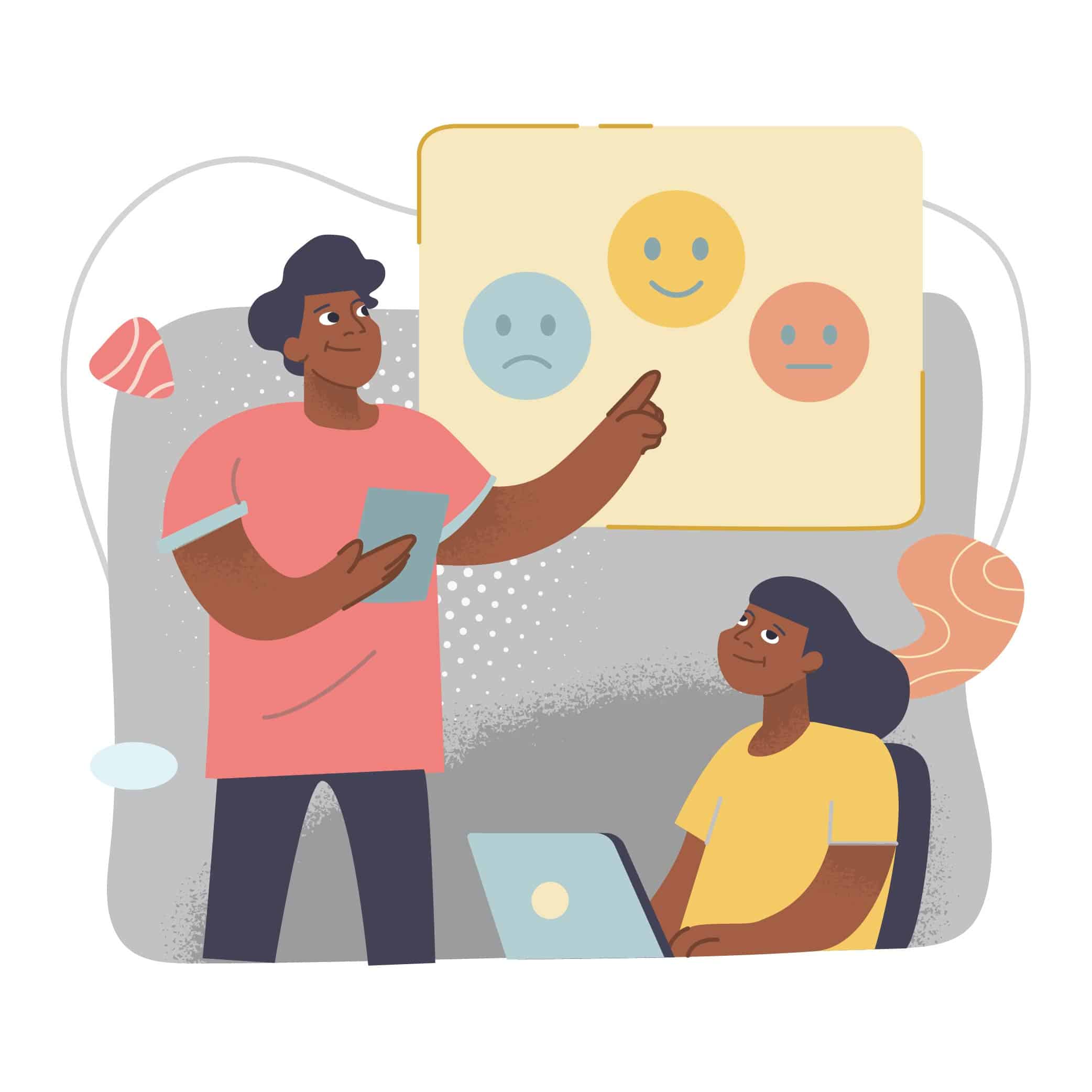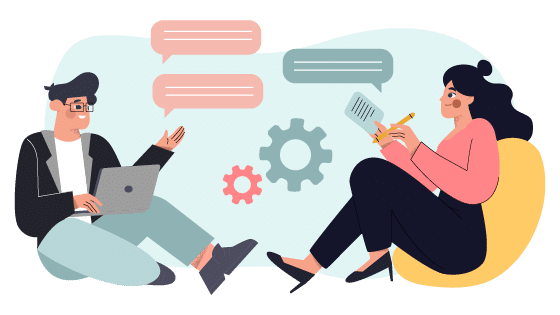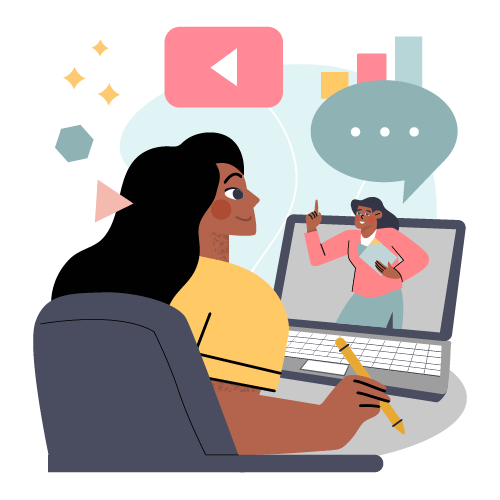Weighing two such crucial concepts could be cited as a challenge. Nevertheless, with a talent for training and a love for learning, we’ve come up with some great definitions and interesting comparisons.
Read on to discover the difference between training and learning.
What is the difference between training and learning?
The difference between training and learning is like the difference between falling in love and feeling joyful. Once we are in love, we feel joyful. Once we have been trained, we have learned something. Training is providing instruction to upskill a person in order to complete a task. Learning is the cognitive process where that person absorbs and understands the instruction and can then perform the task using the learned skill.

Cognitively speaking, what is learning?
Bloom’s taxonomy divides the learning process into six levels of cognitive processes that the student goes through when learning. They are ordered into a hierarchy; once one is achieved, the next begins. The six levels are knowledge, comprehension, application, analysis, synthesis, and evaluation.
This taxonomy is useful in the workplace as it guides educators to develop training programs that are easy to learn from and therefore achieve better outcomes. Benjamin Bloom was an educational psychologist and the chair of the committee of educators at the University of Chicago.
His taxonomy has been developed and built on extensively since he published it in 1956. Bloom’s research showed individualized educational plans enable students to learn significantly better.

The different types of learning
The VARK system defines four different types of learning. Visual (through sight), auditory (through listening), kinetic/tactile (through touch), and reading/writing (through written words). Each person is different and learns in a different way. Educators should embrace the different types of learning styles and work with students to achieve learning goals.
Practically speaking, what is training?
Training is teaching a skill, type of behavior, or useful competency. It is a practical method of information-sharing that is job or task related. Training deals with skills development and is hands-on. Teaching is theoretical and deals with the sharing of knowledge and experience. Training offers much more to the corporate space as it assists people to learn job-related skills that they will use every day in the workplace. Training helps them to develop themselves within their roles and aids in their career progression.
Types of training and eLearning’s weighted contribution
There are many different types of training: employee induction and being taught about culture, apprenticeships, skills training, coaching, on-the-job training, safety training, quality training, and so on. The delivery method best suited to the workplace is most definitely eLearning. It makes use of advanced technologies that save time and produce better learning outcomes. eLearning has made training methods like simulation and gamification easily deliverable and more accessible.
Simulation refers to the use of software to enrich the training process. Gamification also uses advanced software and enriches training through playing games.
Another gift eLearning has bestowed on us is technologically enabled microlearning. It’s a fact, humans now have shorter attention spans! Microlearning is off-setting our lack of capacity with bite-sized bits of information we can still concentrate on. These bite-sized bits of information pop up on your employees’ phones in the form of quizzes, videos, or games to enrich the training process. So advanced is eLearning technology that when an employee is stuck on the job without the skill to perform the task, they can tap into a digital Just-in-Time training module on their mobile phone. This enables them to upskill in minutes and complete the task. Technology is truly changing the way we live, work, train, and learn.
The difference between training, learning, and development
Development focuses on the overall progression of an employee over the long term. Training and learning are run in sessions. Adding this type of overview to your training programs gives direction and clarity.
Looking holistically at what you are trying to achieve through training sessions and translating this into a strategy sees amazing results. According to a study, 94 percent of employees said they would stay at a company longer if the company invested in their careers.
In terms of job satisfaction, 58 percent of employees say development contributes to job satisfaction, and 15 percent of employees that have access to development are more engaged.
In terms of employee turnover, retention rates are 34 percent higher among organizations that offer employee-development opportunities. An employee-development strategy is therefore vital to the success of any organization.
The difference between training and learning in the workplace
Training and learning in the workplace takes on a different tone than in the classroom or lecture hall. Once we complete our education and join the workforce, we may think that we know everything we will need to. Due to the rapid pace of technological advancement, invention, and development, the tools we use and how we work changes all the time.
This makes training and learning so vital to the workplace. Think of how remote work has changed the set of tools you need to do your job. We occasionally used video conferencing and chat platforms; for remote work, they are used daily. As our world advances and changes, we need to upskill our workforce to keep up.
A culture of learning
In order to ensure we keep up, we need to create a culture of learning within our organizations. If we embed learning in our corporate cultures, we will develop and grow exponentially.
80 percent of CEOs stated that finding the right skills was their primary challenge. When a learning culture is established, upskilling is easy and filling the skill gaps can be done internally. A culture of learning plays a vital role in developing leaders and leadership skills. Strong leadership defines an organization’s success.
Meaningful and engaging training
To reap the benefits of training, we must look at the quality of the training we provide. Training opportunities must be easily accessible and user-friendly. Content must be relevant, meaningful, and engaging.
Training and learning may be different concepts, but fundamental to both are the benefits to business. Providing engaging and meaningful training ensures employees are learning. If employees are learning, they are happier and more productive. If they are skilled, top management has less to worry about. If the organization is led by skilled leaders, it will succeed long into the future. Different concepts come together to benefit all.






